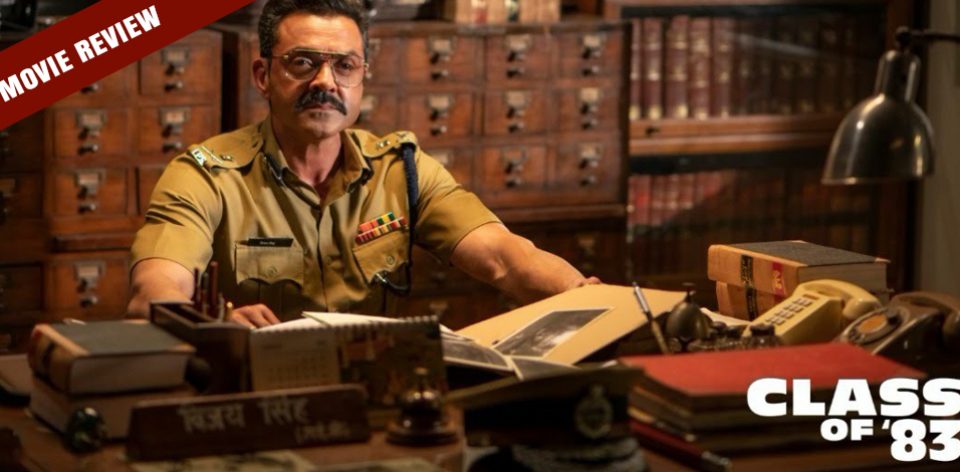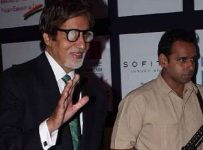I have realized that I have a love-hate relationship with Netflix and its originals. I absolutely love and respect Netflix for what it has achieved in a short span of time, but I hate Netflix’s attempt to curate its Indian originals. Mrs. Serial Killer, Hasmukh, Betaal, and now Class of ’83.
‘Class of ’83’ is an Indian crime drama feature film produced by Red Chillies Entertainment and is the newest addition to the Netflix Indian-film catalog. This film revolves around the life of Vijay Singh (Bobby Deol), an honest cop, who has been shunned by the police department due to his righteous behavior and has been assigned to an administrative role as the dean of the police academy in Nashik in the early 1980s. With something to prove, Vijay Singh recruits 5 bottom-ranked students from the Class of 83, inspires them with his own story and moral values and teaches them to catch gangsters by bending the rules, yet staying within the law. What follows next is 98 minutes of a philosophically driven story sans logic or consistency.

‘Class of ’83’ is an adaptation of the book ‘The Class of 83: The Punishers of Mumbai Police’ by the critically acclaimed author S. Hussain Zaidi. For people who don’t know, this isn’t the first adaptation of S. Hussain Zaidi’s literary work. His previous books such as ‘Black Friday: The True Story of the Bombay Bomb Blasts’, ‘Dongri to Dubai: Six Decades of the Mumbai Mafia’, and ‘Mumbai Avengers’ have all been adapted into feature films. Thus, director, Atul Sabharwal, had his work cut out for him since he already had the story. All he needed was to bring along a team of actors and technicians who could translate the page-turner into a breath-taking film. But I think it’s fair to say that the film fell short of expectations.

To begin with, the story seems rushed and is often difficult to comprehend the reasoning behind a few of the events that take place. Most of the rationale of the story is spoon-fed either through dialogues or inconsistent narration. I say inconsistent because you hear the narration of the story even when the narrator isn’t physically present. Speaking of the dialogue, I was puzzled by the lack of originality and the lackluster quality. There is a scene in which the 5 students are discussing the ‘faster-than-computer calculation’ and ‘volcano-like temper’ of Vijay Singh which is eerily similar to the tagline of the famous Indian children’s comic franchise ‘Chacha Chaudhary’. There is another dialogue where Bobby Deol makes a meek attempt at humor by cracking the joke from the film ‘No Entry’, crediting his optimistic nature to his B+ blood group. Lastly, why are filmmakers still introducing the hero through an action-packed scene where he goes around punching everyone?! Isn’t that a thing of the past?

While the film failed to grab my attention throughout, I did love the cinematography by Mario Poljac. His lighting and camera work complemented the brilliant production design (period detailing) by Donald Reagen Gracy and Anita Rajagopalan Lata. It was also refreshing to see Bobby Deol back in action, though his role seemed limited to anger, subdued, or hurt. His screen time was also reduced to that of a cameo in the second half.
As a passionate cinema lover and a media professional, it pains me to point out those aspects of a film that went wrong as I understand how tough it is to make a film. However, I do believe that every filmmaker has a responsibility to entertain their audience and not present half baked films with questionable justification, especially when it has prestigious names such as Red Chillies Entertainment and Netflix attached to it.
Reviewed by Puneet Ruparel






